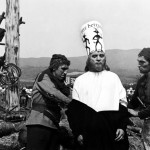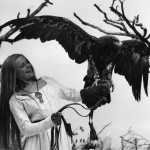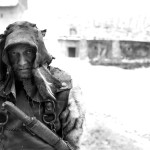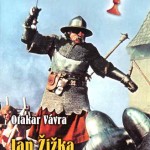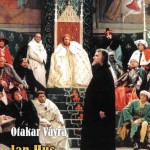From the legendary Otakar Vávra’s biopics of Jan Hus and Jan Žižka, up to the masterpiece Marketa Lazarová, the historical film is one of the most “Czech” genres
With the anniversary of the death of Jan Hus last year, the numerous events scheduled to honour the Bohemian theologian and reformer, including a television drama, have rekindled the interest of the Czech people in a film genre, the historical film, which once was one of the most popular, and often used for political purposes by the old regime.
In the past, the Czechoslovakian film set before 1918, the year of independence from the Hapsburg Empire, mainly had the purpose of founding myths intending to legitimize their national identity. It is therefore no coincidence that the first film financed by the government was Svatý Václav (Saint Wenceslas) in 1929, by Jan Stanislav Kolár, a work which marked the thousandth anniversary of the death of the patron saint of the nation. Also the first Czech feature film made in colour, Jan Roháč z Dube (1947) directed by Vladimír Borský, based on the play of Alois Jirásek, told the story of one of the radical leaders of the Hussite movement. Ultimately, it is of no surprise at all, that the name most connected to the genre was the very man considered “the father of Czechoslovak cinema”: Otakar Vávra.
The director from Hradec Králové, who was born on February 28, 1911 and passed away in 2011 at the age of one hundred years old, has not only been a key figure in the development of cinema in the country, but also a figure highly exposed to controversy for his “willingness” to work, whoever was in power. Vávra’s career spanned six decades and he is one of the few artists who managed to produce his works both in the Nazi Protectorate as well as during the strictest years of Stalinism. Yet it was the emphasis on classical literature and the history of the land that allowed him to survive in these times without troubling the censors of the day too much. Vávra managed to portray many issues and significant events from the history of Czechoslovakia, covering both the recent and distant past, from the religious reforms until the Munich pact (betrayal). The greatest successes arrived in the 50’s, with his “Hussite trilogy”: Jan Hus (1954), Jan Žižka (1955), Proti všem (1957, in English “Against all odds”). For these films, he was able to make use of a huge budget for its time, and a special aid from the state, since even army troops were also made available. To meet the expectations of the regime, the director presented the revolutionary hero Hus as a precursor of the twentieth century revolutions. From the communist perspective, the Hussite revolution was primarily a social revolution, and therefore the party could only be its descendant. As boldly stated by the legendary musicologist, historian and politician Zdeněk Nejedlý: “Today Hus would be the leader of a political party. And his party would be very close to us Communists”.
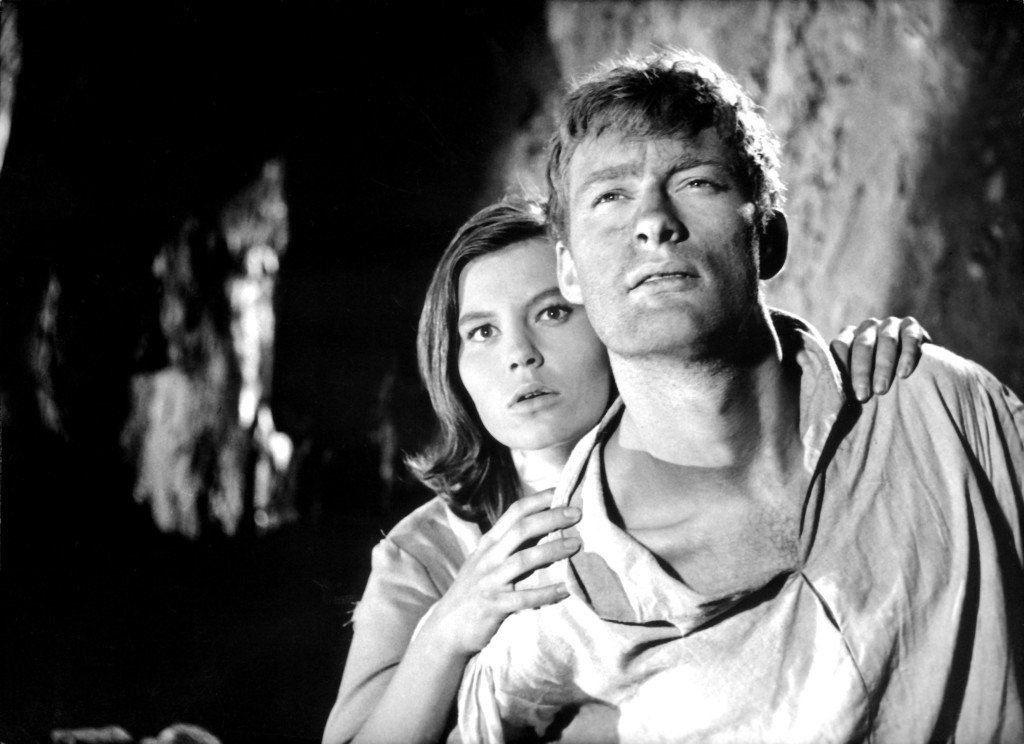 However, if the monumental trilogy can be considered as a product “approved” by the regime, it would be highly unlikely for anyone to pass similar judgment on the film considered by many to be his masterpiece: Kladivo na čarodějnice (1969: Witchhammer). A chilling tale of witchcraft in the seventeenth century, yet also a clear reflection of the political reality of the period of normalization, which followed the invasion of Czechoslovakia, guided and ordered by the Soviets in 1968. The witch-hunt metaphor reflected what was happening and could happen in the present. In short, making a film set in the past was the only way to talk about the present without offending the censors. Besides his masterpieces, the Bohemian filmmaker should be remembered as one of the founders of Famu, the legendary Prague film school where he was the teacher of future directors of the Nová Vlna like Věra Chytilová and Jiří Menzel.
However, if the monumental trilogy can be considered as a product “approved” by the regime, it would be highly unlikely for anyone to pass similar judgment on the film considered by many to be his masterpiece: Kladivo na čarodějnice (1969: Witchhammer). A chilling tale of witchcraft in the seventeenth century, yet also a clear reflection of the political reality of the period of normalization, which followed the invasion of Czechoslovakia, guided and ordered by the Soviets in 1968. The witch-hunt metaphor reflected what was happening and could happen in the present. In short, making a film set in the past was the only way to talk about the present without offending the censors. Besides his masterpieces, the Bohemian filmmaker should be remembered as one of the founders of Famu, the legendary Prague film school where he was the teacher of future directors of the Nová Vlna like Věra Chytilová and Jiří Menzel.
Yet for those who find the style of Vávra too “Soviet-like”, the sixties were a period where you could see new attitudes toward history. If during Stalinism the historical film had become primarily a vehicle for political propaganda, or to create or establish myths, in this decade, directors such as František Vláčil and Oldřich Daněk managed to interpret the genre in other ways. The baroque, hypnotic visuals of the cinema of Vláčil, a genius too often ignored and underestimated in the West, is indeed the perfect remedy for those who do not appreciate the social realism of the historical films of the ‘50s. The first in the genre of the Silesian director, “Devil’s Trap” (Ďáblova past, 1961), is the most traditional, with a story that takes place in the eighteenth century during the Inquisition. Although it may seem a more conventional work when compared to his subsequent films, the viewer is struck by the manner in which the director strives for authenticity in the description of the time. Vláčil has always maintained that in the historical films produced up to that point you saw actors in costume, but without really entering into a particular world and period. Nevertheless, even if the artist had already achieved a significant milestone with Ďáblova past, he perfected his reconstruction of the Middle Ages in his magnus opus “Marketa Lazarová” (1967), now considered to be equal to the film “The Seventh Seal” by Ingmar Bergman or “Andrej Rublev” by Andrei Tarkovsky, as the greatest depiction in film of the era.
The adaptation of the novel by Vladislav Vančura (written in 1931) tells the story of the daughter of a feudal lord (played by the beautiful Slovak Magda Vásáryová) kidnapped by two knights, stands out due to the ability of the director to adapt the erudite words of Vančura for the screen, and for the way in which it examines the contradictory elements of the Middle Ages: Christianity, the pagan rites, the centrality of the feud, the emergence of a hegemonic power. Marketa Lazarová was voted the best Czechoslovakian film of all time by Czech and Slovak critics in a survey of 1999, but despite the high esteem that the Czech people have always had towards Vláčil, he became famous in the West only after his death in 1999, thanks to several retrospectives dedicated to his works in various international festivals and the availability of movies on DVD. Unfortunately, the director suffered the same fate as many of his contemporaries often clashing with the communist authorities after the occupation of 68, and was no longer able to make the films he had in mind. Since his heyday in the ‘60s, in addition to Marketa Lazarová, special mention should be given to “Údolí včel” (1967) for the visual poetry typical of its author, a film once again set in the Middle Ages that tells the childhood of Ondřej, a boy growing up in a strict religious order under the guidance of a Teutonic Knight.
Since 1989, with the increase in production costs and the lack of state subsidies, there was a drop in the number of epics produced with historical themes in the Czech Republic, in contrast to neighbouring countries such as Poland and Hungary, where they remain among the most beloved movies of the public. That said, it is still a genre that remains alive, and it is sufficient to remember “Bathory” from Slovak director Juraj Jakubisko in 2008, the most expensive film ever made in the territories of the former Czechoslovakia. There have also been many initiatives in 2015 in the Czech Republic to honour the death of Jan Hus, including exhibitions, screenings of classic movies of Vávra at the Pon Repo cinema in Prague (during last May) and several Tv documentaries. For some time there have been rumours of a new film about Jan Žižka, the Bohemian general and Hussite leader. The signs do not lie; the Czech historical film has a future yet to be written.
by Lawrence Formisano





